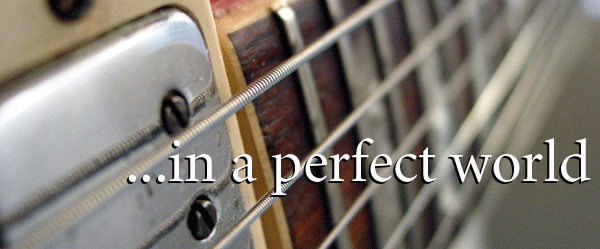Few musicians have had such a profound effect on music in such a short time. Consider Charlie Christian, a legendary jazz guitarist whose professional career lasted less than three years, yet his style and influence is still heard today, more than 70 years after his death. As one of the first musicians to use the electric guitar (most jazz guitar players of his era used arch top acoustic guitars), Christian could actually be heard above a horn section, and he used that to great musical advantage, especially when the great Benny Goodman hired him to join his sextet, then his orchestra. Christian also went on to play with Goodman's smaller combos, but some of his best recordings were with the sextet. This gave the young guitarist exposure to a national audience and allowed him a chance to play with a wider range of musicians.
From Charlie Christian's bio at Riff Interactive:
Charles Henry (Charlie) Christian was born in Bonham, Texas, on July 29, 1916. His family had a musical background. Charlie's father, Clarence James Christian, played trumpet in a silent movie theatre, while his mother, Willie Mae, accompanied him on the piano. He had two older brothers, Edward and Clarence. Both were musically inclined, though to a lesser extent than Charlie. In 1918, the Christian family moved from the Dallas area to Oklahoma City, Oklahoma. There, during the early 1920s, Charlie attended elementary grades in Douglass School, which had an extensive music program. Interestingly, this coincided with the first known experiments of amplified "electric" guitar.Charlie Christian was only 25 when he died. I often wonder about him and other musicians who died at an early age, and I try to imagine what kind of music they would have produced as they matured, as they acquired more experience though travel and exposure to a more diverse range of music and musicians. But I can only wonder. Sometimes that doesn't feel like enough.
Charlie Christian's first public performance as a guitarist was in 1930 at around age 14 when he sat in with the Don Redman Orchestra at Honey Murphy's Club in Oklahoma City. He took solos on "Sweet Georgia Brown," "Tea For Two," and "Rose Room"-most likely holding his acoustic guitar up to a microphone.
In 1933, Charlie Christian began to study guitar with Ralph "Big-Foot Chuck" Hamilton. He learned to read music and some basic music theory. Christian introduced his boyhood friend, T-Bone Walker, to Hamilton, who taught them together. [Editor's note: T-Bone Walker was another groundbreaking guitarist who also was a huge influence on multiple generations of guitarists. Look for more on him later.] Hamilton played in the typical chordal style of the period, and it is doubtful that he had any influence on either Christian's or Walker's single-note solo approach. During this time, Walker and Christian, while learning together, played shows as a duo alternating on bass and guitar.
A breakthrough occurred for Charlie in 1937. Back in Oklahoma City, he was playing piano and met Count Basie's guitarist Eddie Durham, who is credited with having recorded one of the earliest amplified guitar solos. Christian was immediately enamored with the electric guitar and sought Durham out for some basic pointers. Durham later remarked," I never saw anyone learn so fast, nor have I seen anyone rise to the top so quickly." Soon after the meeting, Christian bought his first electric guitar, probably a Gibson ES-150, and began to assemble the components of his horn-like approach.
In July, 1939, jazz and blues impresario and producer John Hammond became aware of Charlie Christian. Acting on a tip from singer Mary Lou Williams, Hammond flew to Oklahoma to hear the guitarist. He then arranged a fortuitous audition in Los Angeles for swing clarinetist Benny Goodman, who was becoming interested in the electric guitar as an ensemble instrument. Goodman was initially unimpressed when he heard Christian comp unamplified rhythm guitar behind "Tea For Two," and further dubbed him "an impossible rube." Later Hammond sneaked Christian on the bandstand for an impromptu jam session with the Benny Goodman Quintet at the Victor Hugo Restaurant. The group played an extended jam on "Rose Room" during which Christian matched Goodman riff for riff and improvised over 20 choruses. He was hired on the spot for $150 a week to play with the Benny Goodman Sextet, and relocated to New York City.
In 1940, Charlie was part of the milieu at Minton's Playhouse in Harlem, and as such foreshadowed the arrival of the bebop idiom along with early luminaries of the genre Dizzy Gillespie, Thelonious Monk and Kenny Clarke. Christian went so far as to purchase an amplifier to be kept on the premises for his regular after-hours jams. Plagued with respiratory problems his entire life and unwilling to scale down his intensive lifestyle, Christian succumbed to tuberculosis and died on March 2, 1942. In a period of less than three years, Charlie Christian had emerged from total obscurity to produce a copious body of material which forever altered the course of music.
But the fact that we got Charlie Christian at all is probably good enough.
Also see this wonderful piece at the Jas Obrecht Music Archive:
Producer John Hammond Remembers Charlie Christian

No comments:
Post a Comment